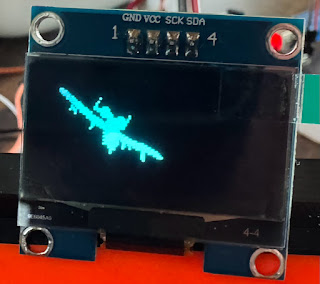Standby Compass: StepperTest

Yesterday I finally received the EasyDriver stepper driver and the X27-168 steppers(no more AliExpress orders if I can help it - took weeks to arrive). I opened up the motor and removed the tiny plastic tab that was keeping it from spinning 360. I soldered headers on one of the EasyDrivers for prototyping and soldered some solid core wire to the little leads on the motor. After wiring it all up on the breadboard I used this code to see it run. For the connections: you need to put one coil's wire pair on the A pins for the EasyDriver and the other coil's on the B pins. There is no polarity so the A coil wires can go on plus or minus. I put the 12v power on the M+ and GND pin pair. Then these as well: // EasyDriver -> Nano stp -> 2 dir -> 3 MS1 -> 4 MS2 -> 5 EN -> 6 GND (by step pin) -> GND Do not connect/disconnect the motor when power is applied . Power is constantly flowing to keep motor still and changin...


